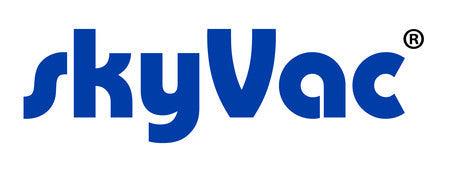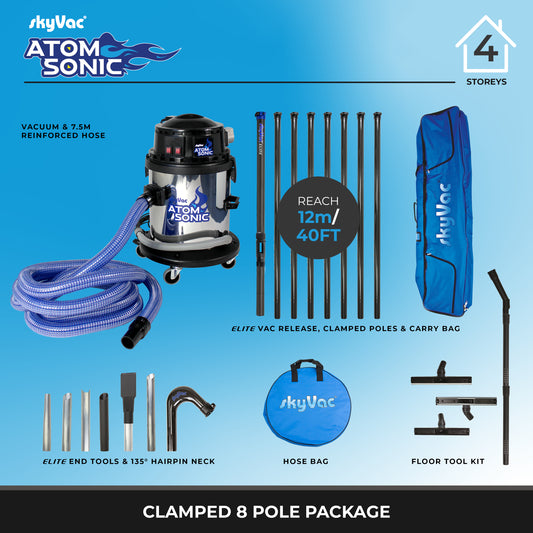Conformité aux normes de sécurité et de conformité avec un taux de poussière élevé
Partager
Le dépoussiérage intensif ne se limite pas au nettoyage ; il est essentiel au maintien d'un environnement sûr, notamment dans les espaces commerciaux. L'accumulation de poussière dans les zones difficiles d'accès peut présenter de graves risques d'incendie. Il est donc essentiel de suivre les bonnes pratiques de dépoussiérage intensif pour respecter les normes de sécurité et de conformité. Cet article explore le lien entre le dépoussiérage intensif et la sécurité incendie, les outils nécessaires à un nettoyage efficace et les moyens de garantir le respect des réglementations de sécurité.
Points clés à retenir
- Un dépoussiérage régulier est essentiel pour prévenir les risques d’incendie en éliminant l’accumulation de poussière inflammable.
- L’utilisation des bons outils et techniques peut rendre le dépoussiérage en hauteur plus sûr et plus efficace.
- Le respect des normes OSHA et de sécurité incendie est essentiel pour protéger les travailleurs et réduire les risques.
Comprendre la forte concentration de poussière et la sécurité incendie
L'importance d'un dépoussiérage régulier en hauteur
Bon, alors pourquoi dépoussiérer en hauteur ? Réfléchissez-y : la poussière ne traîne pas simplement au sol. Elle flotte, se dépose et adore s'accumuler sur les surfaces difficiles d'accès en hauteur. On parle ici des poutres, des tuyaux, des conduits et de tous ces autres endroits en hauteur souvent négligés. Un dépoussiérage régulier en hauteur est primordial, car il permet de s'attaquer à cette accumulation cachée et d'éviter bien des problèmes par la suite.
- Amélioration de la qualité de l'air : La poussière peut provoquer des allergies et des problèmes respiratoires. L'éliminer rend l'air que nous respirons plus pur.
- Lutte antiparasitaire : La poussière peut attirer les nuisibles. Un environnement propre est moins propice à leur accueil.
- Meilleur éclairage : L’accumulation de poussière sur les luminaires réduit leur efficacité. Des luminaires propres permettent des espaces plus lumineux et des factures d’énergie plus faibles.
Comment un dépoussiérage élevé réduit les risques d'incendie
Parlons maintenant d'un sujet sérieux : la sécurité incendie. Saviez-vous que la poussière, et en particulier certains types de poussière, peut constituer un risque d'incendie majeur ? C'est vrai ! L'accumulation de poussière en hauteur crée une source d'inflammation. Imaginez : une simple étincelle suffit pour créer une catastrophe potentielle. C'est pourquoi les appareils de mesure de la poussière sont importants dans les entrepôts.
Voici l'affaire :
- Poussières combustibles : De nombreux matériaux, réduits en fines poussières, deviennent hautement combustibles. Parmi eux, on trouve la poussière de bois, la poussière de métal et même certains produits alimentaires.
- Surface : Plus les particules de poussière sont petites, plus la surface exposée à l'oxygène est grande, ce qui facilite l'inflammation de la poussière.
- Explosions : Dans les espaces clos, une explosion de poussière peut être incroyablement puissante et destructrice. Il s'agit d'une réaction en chaîne où l'explosion initiale soulève davantage de poussière, provoquant des explosions encore plus importantes. Les systèmes de détection et d'extinction d'étincelles peuvent contribuer à empêcher que ces étincelles ne deviennent un problème.
Le dépoussiérage en hauteur contribue à prévenir les incendies en éliminant cette source de combustible. En nettoyant régulièrement les zones en hauteur, nous réduisons la quantité de poussière combustible susceptible de s'accumuler, minimisant ainsi les risques d'incendie ou d'explosion. C'est une mesure simple qui peut faire toute la différence pour la sécurité de nos installations. Envisagez d'investir dans des systèmes de dépoussiérage en hauteur pour rendre le processus plus sûr et plus efficace.
Outils et techniques pour un dépoussiérage efficace en hauteur
Choisir le bon équipement
Pour un dépoussiérage intensif, disposer des bons outils peut faire toute la différence. Nous avons constaté que le marché propose une gamme d'équipements spécialisés conçus pour éliminer la poussière dans les endroits difficiles d'accès. Il ne s'agit pas de prendre n'importe quel plumeau ; il faut choisir des outils efficaces, sûrs et performants pour l'environnement spécifique à nettoyer. Par exemple, pour les accumulations de poussière importantes, comme dans les usines de fabrication, il vous faudra un outil plus robuste que celui utilisé dans un bureau.
Voici quelques éléments que nous prenons en compte lors du choix de l’équipement :
- Portée : L'équipement peut-il atteindre les points les plus élevés sans échelle ni échafaudage ? Les perches télescopiques sont indispensables.
- Puissance d'aspiration : Pour les systèmes d'aspiration, quelle est la puissance d'aspiration ? Il faut une puissance suffisante pour soulever la poussière, et non pas seulement la remuer.
- Polyvalence : L'équipement peut-il traiter différents types de surfaces et de poussières ? Des accessoires réglables sont essentiels.
En parlant de systèmes, avez-vous testé le système de dépoussiérage élevé ? Il vaut la peine d'y jeter un œil pour découvrir les fonctionnalités disponibles.
Meilleures pratiques pour un dépoussiérage en hauteur
Bon, vous avez le matériel. Et maintenant ? Le dépoussiérage en hauteur ne se résume pas à agiter un chiffon ; il faut le faire efficacement et en toute sécurité . Au fil des ans, nous avons appris quelques astuces qui font toute la différence. Commencez toujours par le haut et descendez. Cela vous évite de devoir refaire le nettoyage des zones déjà dépoussiérées. Il est également important de contrôler la propagation de la poussière.
Voici notre liste de bonnes pratiques :
- Planifiez votre attaque : Avant même de commencer, parcourez l'espace et identifiez les zones à surveiller. Cela vous aidera à choisir les bons outils et à planifier votre parcours.
- Utilisez la bonne technique : Pour les aspirateurs, effectuez des mouvements superposés pour bien nettoyer chaque centimètre. Pour les plumeaux, effectuez des mouvements légers pour éviter d'endommager les surfaces.
- Nettoyez régulièrement votre équipement : Un plumeau sale répand la poussière. Nettoyez ou remplacez régulièrement vos outils de dépoussiérage pour préserver leur efficacité. Envisagez des solutions de nettoyage innovantes pour maintenir votre équipement en parfait état.
- La sécurité avant tout : portez toujours un équipement de protection individuelle (EPI) approprié, tel qu’un masque et une protection oculaire, pour éviter d’inhaler la poussière ou d’en avoir dans les yeux.
Conformité aux normes de sécurité en cas de forte accumulation de poussière
Conformité aux exigences de l'OSHA
Lorsqu'on parle de poussière en suspension, il ne s'agit pas seulement de se débarrasser des toiles d'araignées ; il s'agit aussi d'assurer la sécurité de tous et de respecter les règles. L'OSHA a des directives spécifiques concernant la poussière en suspension , notamment dans les endroits où la poussière peut constituer un réel problème. Nous devons connaître ces règles sur le bout des doigts. Il est de notre devoir de veiller à ne pas nous contenter de nettoyer, mais de le faire de manière à protéger notre équipe et à éviter les ennuis avec les autorités. En d'autres termes : un espace de travail propre est un espace de travail sûr, et un espace de travail sûr est un espace de travail conforme. Nous devons toujours chercher des moyens d'améliorer nos processus et de rester à la pointe des réglementations de sécurité. Par exemple, dans les entrepôts et autres lieux de travail à forte concentration de poussière, les employeurs doivent être proactifs pour éliminer les particules nocives plutôt que de se contenter de surveiller les niveaux de poussière. Voici quelques points à retenir :
- Utilisez toujours un équipement de protection individuelle (EPI) adapté. Pensez aux masques, aux gants et aux lunettes de protection.
- Assurez-vous que notre équipement est en parfait état. Des contrôles et un entretien réguliers sont essentiels.
- Conservez des traces de nos formations et de nos procédures de sécurité. C'est important d'avoir la preuve que nous faisons les choses correctement.
Intégration des protocoles de sécurité incendie
La poussière peut sembler inoffensive, mais certains types de poussière peuvent constituer un réel risque d'incendie. Les poussières combustibles peuvent provoquer des explosions si elles s'accumulent et produisent une étincelle. C'est pourquoi il est essentiel d'intégrer des protocoles de sécurité incendie à notre routine de dépoussiérage intensif. Il est essentiel de réfléchir à la manière dont nous éliminons la poussière et à son élimination. Déplaçons-nous simplement le problème ailleurs ou l'éliminons-nous définitivement ? Il est également important d'être conscient des types de poussières que nous traitons. Certains matériaux sont plus inflammables que d'autres, ce qui influence notre approche du nettoyage. Voici un bref aperçu de ce que nous devons faire :
- Identifier les risques potentiels d’incendie liés à l’accumulation de poussière.
- Mettez en place un programme de nettoyage régulier pour éviter l’accumulation de poussière.
- Utilisez un équipement approprié conçu pour les poussières combustibles, comme des aspirateurs certifiés ATEX.
En suivant ces étapes, nous pouvons réduire considérablement les risques d'incendie et assurer la sécurité de nos lieux de travail. N'oubliez pas qu'un peu de prudence supplémentaire contribue grandement à prévenir les catastrophes.
En matière de dépoussiérage en hauteur, le respect des règles de sécurité est primordial. Ces règles contribuent à la sécurité des travailleurs et à la bonne exécution du travail. Pour en savoir plus sur la sécurité lors du dépoussiérage en hauteur, consultez notre site web pour obtenir des conseils et des recommandations !










